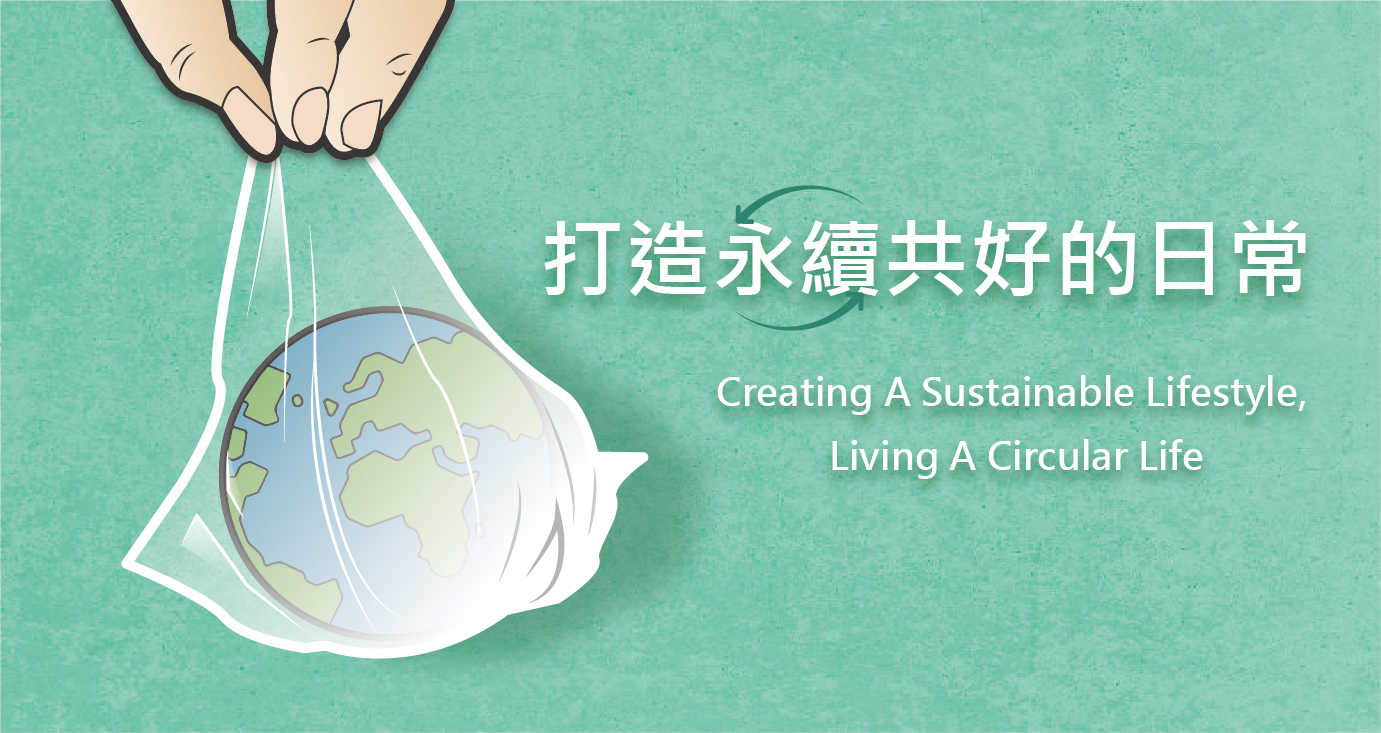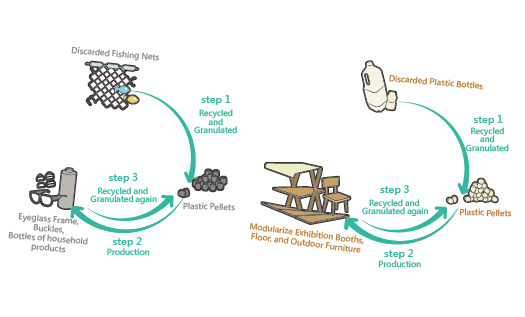Jul 18, 2022

Since the Industrial Evolution, the linear “take, make, dispose of” economy became a new economic model that people lived with. This meant that raw materials were collected, transformed into products, and used until reached the end of their useful lifetimes and were discarded. After World War II, people faced the problem of the baby boom and a lack of staple merchandise so the petrochemical industries grew fast and a huge amount of cheap plastic goods were produced. Nowadays, plastics are used in food, textile, architecture, transportation, sports, and IT industries, and exist everywhere in daily life. According to the literature, people produced more than 8300 million metric tons (Mt) of plastics from 1950 to 2015. Approximately 6300 Mt of plastic waste had been generated, only around 9% of which had been recycled, 12% was incinerated, and the rest was accumulated in landfills or the natural environment. Plastics would last long in the environment, gradually degrade into brittle, microplastics or nanoplastics, and spread all around the world through seas, rivers, earth even air seriously damaging the ecosphere. (ScienceAdvances)

Fig. 1 Global production, use, and the fate of polymer resins, synthetic fibers, and additives (1950 to 2015; in million metric tons). (ScienceAdvances)
For slowing down the pace of natural resources exhaustion, people started to advocate the 3R approach “Reduce, Reuse and Recycle” which is particularly in the context of production and consumption. In the eighties, the Taiwan government implemented the policies of charging the producers a fee on garbage collection and treatment as subsidies to the recyclers. About a decade ago, some large enterprises and a few small and medium enterprises have been committed to enterprise waste removal and disposal. They nowadays more focus on upcycling resources including lowering the acquisition of raw materials, efficiently reusing existing resources, avoiding reusable resource waste, and enhancing the utilization of energy and resources for actualizing a circular economy.
Plastics Industry Development Center (PIDC) has long assisted industries in enterprise waste removal and disposal, and recycled materials development. PIDC often heard the confusion of the developers, the producers, and the suppliers in the industrial chain over “how to reuse enterprise waste, and is it worth to reuse it?”, “it is difficult for the designers and the product developers to see, touch or learn about materials from various applied fields at once!”, “how could the suppliers know about the potential customers’ needs and the criteria of sustainable materials?”. PIDC realized that using materials efficiently and implying raw materials substitution effective are fundamentals of lessening the environmental load. Following the concept of Cradle to Cradle design and the pledge to Net Zero emissions by 2050, it would be an ideal condition if people could endlessly reuse resources through circular design.
The idea of sustainability prompts people to change and the change starts with materials. With the advantages of the remarkable recycling system and manufacturing abilities of Taiwan, PIDC believes that what we need is a platform that offers a physical and virtual space for the communication between the designers, the creative developers, and the producers, and for the worldwide information exchange. Under the background and got funded by The Small and Medium Enterprise Administration, PIDC started to establish the Sustainable Materials Library.
Sustainable Materials Library (SML) had its official opening in 2020 from the perspective of establishing a circular ecosphere. SML demonstrates sustainable materials which are classified into 7 categories of plastics, fibers, rubbers, metals, minerals, natural materials, and others (recycling materials, adhesives, coating, additives, etc.). Designers and product developers could see, touch, and feel raw materials, secondary processing products, or application prototypes, and receive information on material properties and treatment in the library. SML tells the stories behind the sustainable materials, for example, how do discarded fishing nets be collected, treated, and reused on fabricating eyeglass frames, buckles, or bottles of household products; how do recycled plastic bottles be used to produce durable, easy to clean wooden look plates to replace the real wood and could be applied to floor, walkway and exhibition booth.

Fig.2 The diagram shows the process of circulating discarded fishing nets, discarded plastic bottles and producing the products.
This is how the circular economy works the resources are perpetually circulated and back to our daily life again in the forms of products. However, only if the consumers clearly aware of the concept of circular economy, people could actually bring it into practice. SML not only promotes the usage of sustainable materials but also communicates with the public through different accesses.
A growing coalition of countries, cities, businesses, and other institutions are pledging to get to net-zero emissions. Sustainability is no longer a slogan but becomes a significant trend worldwide. In January 2022, Nestlé Taiwan cooperated with SML to build a sustainable image wall to dispose of the wooden pallets and the coffee grounds symbolizing the corporate commitment to sustainability.
%20-%20%E5%B7%B2%E4%BF%AE%E5%9C%96.jpg)
Fig.3 The Nestlé Taiwan sustainable image wall. (https://sml.pidc.org.tw/newsdetail_tw.php?id=3811)
Coffee is one of the most popular and valued beverages around the world because a cup of coffee improves our mood and gives us a mental boost. As an end result of this big market, the coffee industry is responsible for generating large quantities of residues, for example, Nespresso's signature coffee capsules. Do you ever think about making bikes or chic stationeries with recycled aluminum on the coffee capsules? Do you know coffee grounds are not only applied to compost but also transformed into waterproof boots, technical textiles or coffee mugs, etc.?
In mid-April 2022, Nespresso held the”2022 Nespresso Sustainable Exhibition- Future Garden” at Songshan Cultural and Creative Park to show its commitment to Corporate Social Responsibility and the actions it took. SML was invited to join the exhibition and exhibited sustainable materials which are closely related to our daily life such as containers, clothes, shoes, bags, accessories, and some construction materials. SML told the stories behind the discarded resources and presented the value of sustainable consumption through these recycled products. SML aimed to communicate with the public, connect sustainable materials to daily life and appeal to people's awareness of the circular economy through the exhibition. Let’s create a sustainable lifestyle and live a circular life together!

Fig.4 Sustainable Materials Library showed sustainable materials which are closely related to our daily life at 2022 Nespresso Sustainable Exhibition- Future Garden.